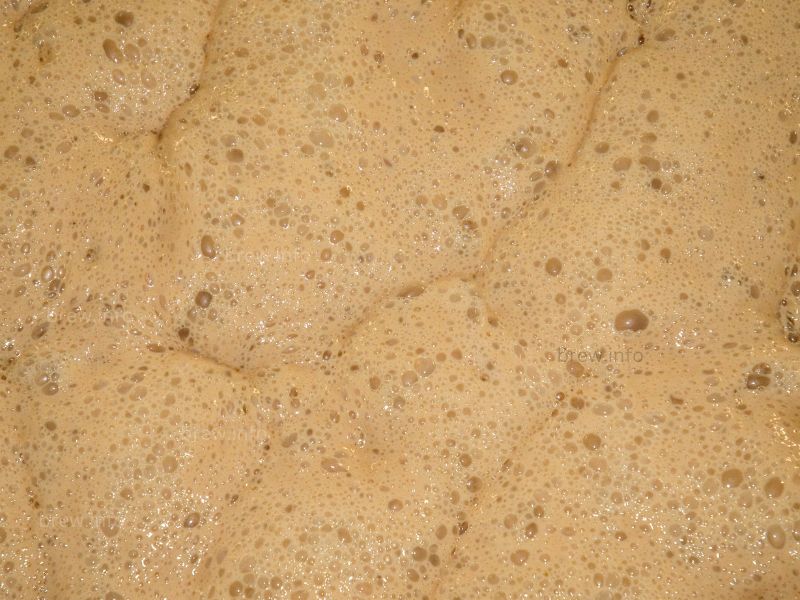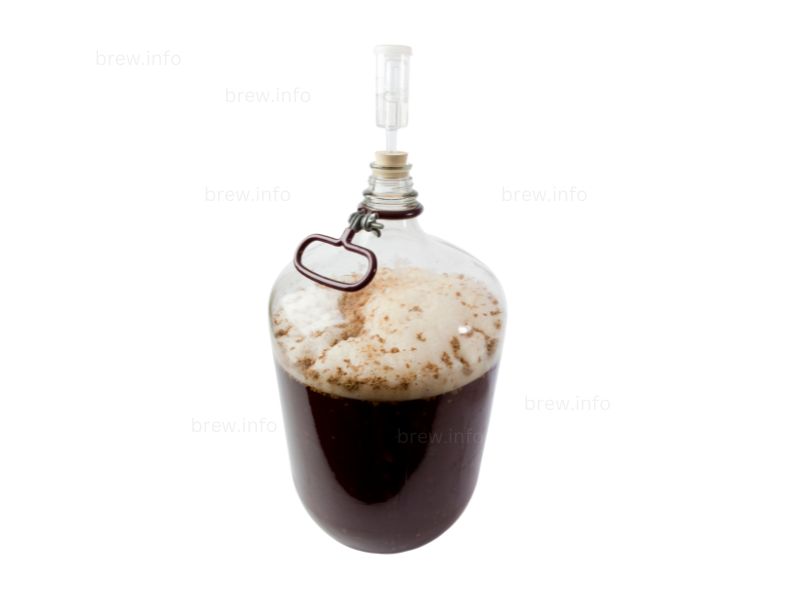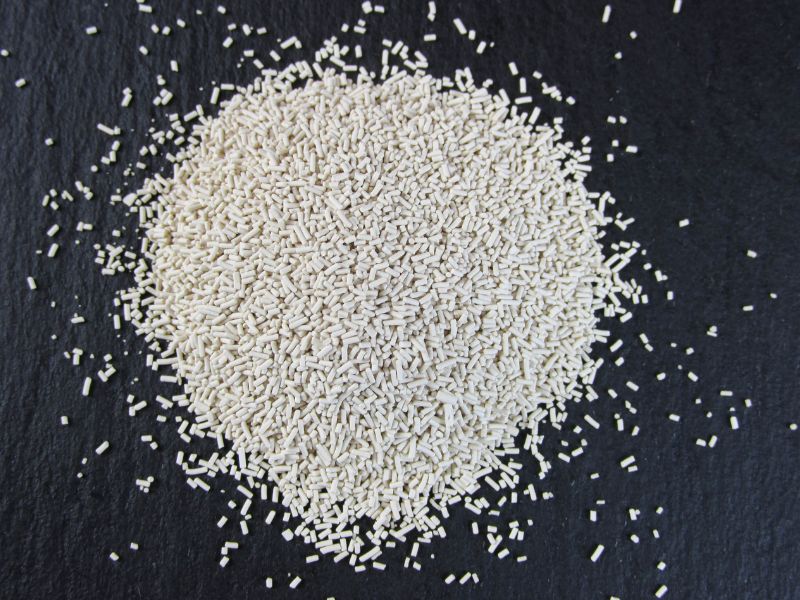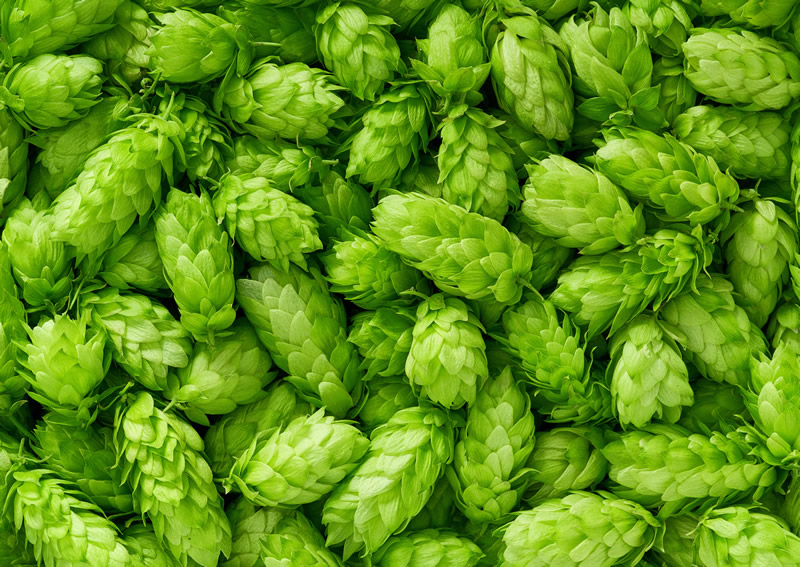Introduction to Yeast in Brewing
Yeast is a pivotal element in the brewing process, its role transcending mere fermentation. It’s not just about converting sugars into alcohol; yeast imparts character, flavor, and depth to the final brew. Understanding yeast pitching rates and the proper use of starters is crucial for every brewer, whether a seasoned professional or a homebrew enthusiast.
The Science of Yeast Pitching
When we talk about yeast pitching, we refer to the process of adding yeast to the wort (the liquid extracted from the mashing process during brewing). The pitching rate, or the amount of yeast added, can significantly influence the beer’s flavor, aroma, and overall quality. A pitching rate that is too high or too low can lead to various issues, including off-flavors and inconsistent fermentation.
- Under-pitching can cause the yeast to overwork, potentially leading to excessive reproduction and undesirable flavors.
- Over-pitching might result in an overly rapid fermentation, stripping the beer of its desired complexity.
The optimal pitching rate depends on factors like the original gravity of the wort, the yeast strain, and the fermentation temperature.
Importance of Yeast Health and Viability
Yeast health is a critical component in brewing. Healthy yeast ensures efficient fermentation and helps prevent unwanted flavors. The viability of yeast, or the proportion of live cells in a yeast culture, is a key measure of its health. Factors influencing yeast health include:
- Oxygen levels: Yeast requires oxygen to multiply and fortify its cell walls, making it more stress-tolerant.
- Alcohol concentration: High levels of ethanol can be toxic to yeast, affecting its viability.
- Storage and handling: Improper storage or excessive handling can lead to contamination and reduced yeast health.
For a comprehensive understanding of yeast health and viability, Escarpment Labs presents a detailed knowledge base of fermentation advice.
In summary, mastering yeast pitching and starters is crucial for successful brewing. It involves a delicate balance, understanding the yeast’s needs, and ensuring the right conditions for a healthy fermentation. As we delve deeper into yeast pitching rates and starters, keep these foundational concepts in mind. They set the stage for more advanced discussions on yeast management and techniques in brewing.
Understanding Yeast Pitching Rates
Pitching the right amount of yeast is a delicate art, crucial for the success of the brewing process. Getting this balance right requires understanding and managing several factors:
- Original Gravity (OG): The OG of wort influences the required yeast count. Higher gravity worts demand more yeast to efficiently ferment the sugars.
- Yeast Strain Variability: Different yeast strains have varying fermentation characteristics and therefore require different pitching rates.
- Fermentation Temperature: Cooler fermentation temperatures, typical in lager brewing, necessitate higher pitching rates due to slower yeast activity.
The complexity of these variables makes it clear that there’s no one-size-fits-all answer when it comes to the optimal pitching rate. A general guideline is to aim for a pitch rate of about 1 million cells per milliliter of wort per degree Plato, though this can vary depending on specific conditions and yeast strains. We delve deeper into the nuances of yeast pitching rates, including the differentiation between ales and lagers, later in this article.
Determining the Right Pitch Rate
Determining the correct pitch rate is not just a matter of following a formula. It’s about understanding the interplay between various factors:
- Effect of Under-pitching: Not adding enough yeast can lead to excessive cell reproduction and a heightened risk of off-flavors. This is particularly true in high-gravity beers where the yeast faces a more challenging environment.
- Consequences of Over-pitching: Conversely, adding too much yeast can result in overly rapid fermentation, potentially stripping the beer of its desired character and complexity.
For homebrewers and craft brewers alike, the decision of how much yeast to pitch involves a careful evaluation of the specific conditions of each brew. A useful tool in this process is a yeast pitching calculator, which can provide more tailored recommendations based on the specific parameters of your brew.
Understanding and applying the right yeast pitching rates is essential for achieving a successful fermentation and desired beer profile. It requires a blend of science, experience, and sometimes a bit of intuition to get it just right. As we move forward, we will explore the role of yeast starters in this process, further enhancing our understanding of effective yeast management in brewing.

An In-Depth look into using Ale vs. Lager yeast for a starter
In the world of brewing, the choice between ale and lager yeasts for starters is dictated by their unique fermentation characteristics, each bringing its distinct qualities to the brewing process. Ale yeasts, known for their top-fermenting abilities, thrive in warmer conditions and are often favored for their faster fermentation rates, making them suitable for a variety of ale styles. These yeasts contribute to the fruity and ester-rich profiles that are hallmarks of ales. In contrast, lager yeasts, which ferment at the bottom and prefer cooler temperatures, require a more patient approach in starter preparation. This aligns with the lagers’ need for higher yeast counts due to their slower metabolism in cooler conditions, essential for achieving the clean, crisp taste that lagers are renowned for. Understanding these fundamental differences is key to mastering the art of brewing, whether one is aiming for the robust flavors of ales or the subtle nuances of lagers.
Lager Yeast
Yeast pitching rates for lagers differ from those for ales due to the unique fermentation characteristics of lager yeasts. Lagers, known for their crisp and clean profiles, ferment at cooler temperatures than ales, typically around 8-12°C (46-54°F). This cooler fermentation environment slows down yeast activity, necessitating a higher pitching rate to achieve optimal fermentation. Here’s a summary of the key aspects regarding lager yeast pitching rates:
- Higher Pitch Rates: Lager fermentations generally require a higher yeast cell count compared to ales. The pitching rate often suggested for lagers is around 1.5 to 2 times higher than that for ales. This increased rate compensates for the slower metabolism of the yeast at cooler temperatures.
- Cells per Milliliter per Degree Plato: A common metric used for determining pitch rates is cells per milliliter (c/mL) per degree Plato (°P). For lagers, the typical pitching rate might range from 1.5 million to 2 million cells/mL/°P. This is in contrast to ales, where the rate is usually closer to 0.75 million to 1 million cells/mL/°P.
- Dependence on Original Gravity: The original gravity (OG) of the wort also influences the pitching rate. Higher gravity beers, both lagers and ales, require more yeast. For lagers with high original gravity, the pitching rate might need to be increased further to ensure complete and healthy fermentation.
- Adjustments for Specific Brews: It’s important to note that these rates can vary based on the specific lager strain being used, the particular recipe, and the brewing conditions. Experienced brewers often fine-tune the pitching rates based on their specific setup and the characteristics they aim to achieve in their beer.
- Use of Pitching Rate Calculators: Many brewers utilize online yeast pitching rate calculators. These tools can provide more customized recommendations by considering factors such as the type of yeast, the volume of the wort, and its original gravity.
In summary, lager yeast pitching rates are generally higher than those for ales due to the lower fermentation temperatures. These rates are adjusted based on various factors including the beer’s original gravity and the specific yeast strain characteristics. Brewers often use pitching calculators and their own experience to determine the optimal amount of yeast for each batch.
Ale Yeast
When using ale yeast for brewing, the pitching rates can be quite different compared to lager yeast, mainly due to the warmer fermentation temperatures associated with ale brewing. Ale yeasts typically ferment at temperatures ranging from about 15°C to 22°C (59°F to 72°F), which is higher than the range for lagers. Here are some key points about ale yeast pitching rates:
- Standard Pitch Rates: For ales, the standard pitching rate is typically around 0.75 million to 1 million cells per milliliter per degree Plato (°P). This rate can ensure a healthy fermentation process without over-stressing the yeast.
- Influence of Original Gravity: As with lager yeasts, the original gravity of the wort influences the required pitching rate. Beers with higher gravity (higher sugar concentration) generally require more yeast to ensure complete fermentation.
- Yeast Strain Variability: Different ale yeast strains may have varying fermentation characteristics, and thus, the pitching rate might be adjusted accordingly. Some strains might be more vigorous or have different attenuation levels, affecting the amount of yeast needed.
- Fermentation Characteristics: Ale yeasts tend to produce more esters and other flavor compounds compared to lager yeasts, especially at higher fermentation temperatures. This characteristic should be considered when determining the pitching rate, as under-pitching can lead to excessive ester production while over-pitching might suppress some of the desired flavors.
- Practical Adjustments: Many brewers will adjust their pitching rates based on experience and the specific characteristics they are aiming to achieve in their beer. It’s not uncommon for brewers to develop their guidelines over time-based on trial and error.
- Online Calculators and Tools: There are various online tools and calculators available to brewers that can provide more precise pitching rate recommendations based on specific parameters like wort volume, original gravity, and yeast strain.
In summary, the pitching rate for ale yeasts is generally lower than that for lager yeasts, mainly due to the warmer fermentation temperatures. However, just as with lager yeast, the specific pitching rate for an ale yeast can vary based on several factors including the original gravity of the wort, the particular yeast strain, and the desired flavor profile of the beer. Brewers often rely on a combination of standard guidelines, online calculators, and personal experience to determine the optimal pitching rate for their ale brews.
| Aspect | Ale Yeast | Lager Yeast |
|---|---|---|
| Fermentation Temperature | 15°C to 22°C (59°F to 72°F) | 8°C to 12°C (46°F to 54°F) |
| Standard Pitching Rate | 0.75 million to 1 million cells/mL/°P | 1.5 million to 2 million cells/mL/°P |
| Influence of Original Gravity | Higher gravity requires more yeast | Higher gravity requires more yeast, even more than ales |
| Yeast Strain Variability | Different strains may require adjustments | Different strains may require adjustments |
| Fermentation Characteristics | Produce more esters and flavor compounds | Slower metabolism due to cooler temperatures |
This table provides a concise comparison of the general guidelines and considerations for yeast pitching in ale and lager brewing. Keep in mind that these are general ranges and the specific pitching rate can vary based on a variety of factors including the specific yeast strain, the beer recipe, and the brewer’s experience and preferences.
The process of yeast pitching in brewing can vary significantly between using liquid and dry yeast, mainly due to differences in yeast concentration, preparation methods, and storage stability.
The differences between using a liquid vs. dry yeats for your starter
Liquid Yeast
- Concentration: Liquid yeast often comes in a lower concentration compared to dry yeast. Therefore, you might need a larger volume of liquid yeast to achieve the same pitching rate.
- Yeast Starters: For higher gravity beers or larger batch sizes, it’s common to prepare a yeast starter with liquid yeast. This step involves cultivating the yeast in a small volume of wort to increase the cell count before pitching it into the main batch.
- Viability and Shelf Life: Liquid yeast tends to have a shorter shelf life, and its viability decreases faster over time. This necessitates careful storage and often requires checking the production date to estimate viability.
- Variety of Strains: Liquid yeast generally offers a wider variety of strains, allowing brewers more flexibility in achieving specific flavor profiles.
Dry Yeast
- Concentration and Preparation: Dry yeast typically has a higher concentration of cells and does not usually require a starter. It’s often directly pitched into the wort after proper rehydration.
- Rehydration Process: The rehydration of dry yeast in warm water before pitching is recommended to ensure the health and viability of the yeast cells. This step helps the yeast to acclimate and begin metabolic processes without the shock of being introduced directly into the wort.
- Stability and Shelf Life: Dry yeast has a longer shelf life and greater stability at room temperature. It’s more resistant to viability loss over time, making it a more convenient option for storage.
- Ease of Use: Due to its stability and concentration, dry yeast is often considered easier to use, especially for beginner brewers or those looking for a more straightforward brewing process.
Choosing Between Liquid and Dry Yeast
- Beer Style and Flavor Profiles: The choice might depend on the specific beer style and desired flavor profile. Some strains are only available in liquid form, offering unique characteristics.
- Batch Size and Gravity: For larger batches or higher gravity beers, considering the yeast cell concentration and the feasibility of using starters is important.
- Brewer’s Preference and Experience: Personal preference, experience, and convenience often play a significant role in choosing between liquid and dry yeast.
In summary, while both liquid and dry yeasts are viable options for brewing, they come with different preparation requirements, concentrations, and storage considerations. Liquid yeast offers more variety and is often used with a starter for high-gravity or large batches, whereas dry yeast is valued for its ease of use, stability, and longer shelf life. The choice between the two often depends on the specific requirements of the beer being brewed and the brewer’s preferences.
The Role of Yeast Starters
In brewing, a yeast starter is essentially a small fermentation that prepares yeast for the main event. It’s a crucial step, particularly when dealing with high-gravity beers or when yeast viability is a concern. A healthy starter ensures a robust yeast population, ready to tackle the fermentation process effectively and efficiently.
Why Yeast Starters are Important
- Increased Cell Count: Starters help increase the number of yeast cells, ensuring that the pitch rate is optimal for the wort’s gravity.
- Healthier Yeast: They provide a controlled environment for yeast to become more vigorous, leading to a more consistent and complete fermentation.
- Reduced Lag Time: A starter can reduce the time it takes for the fermentation to begin, limiting the window where the wort is susceptible to contamination.
Creating a yeast starter is not just about adding more yeast; it’s about cultivating healthy and active yeast. This process is particularly vital for high-gravity beers and lagers, where the yeast faces more significant challenges during fermentation.
Preparing Yeast Starters
Preparing a yeast starter is akin to a mini brewing session. It involves creating a small batch of wort, inoculating it with yeast, and allowing it to ferment for a short period. This process can significantly enhance the health and quantity of the yeast.
Steps to Prepare a Yeast Starter
- Create a Small Wort Batch: Usually, this is a low-gravity wort, often made using dry malt extract.
- Sanitization: As with all brewing processes, ensuring everything is clean and sanitized is vital to avoid contamination.
- Inoculation: Add the yeast to the wort and provide adequate aeration to encourage yeast growth.
- Fermentation: Allow the starter to ferment, typically for 24 to 48 hours, until you observe active fermentation signs.
Necessary Equipment for Yeast Starters
- Erlenmeyer Flask: Ideal for making starters as it can be directly heated and is easy to sanitize.
- Stir Plate: Enhances yeast growth by continuously stirring the starter, keeping the yeast in suspension.
- Airlock or Foil: To cover the flask, allowing gases to escape while keeping contaminants out.
In summary, yeast starters play a critical role in ensuring a healthy and vigorous yeast population, leading to more consistent and successful fermentations. By understanding and implementing the principles of yeast starters, brewers can significantly improve the quality and character of their final product.

Advanced Yeast Techniques
While understanding the basics of yeast pitching and starters is essential, mastering advanced techniques can elevate your brewing to new heights. These techniques involve more than just adding yeast to the wort; they require a nuanced understanding of yeast behavior and fermentation dynamics.
Harvesting and Re-pitching Yeast
- Benefits of Re-pitching: Reusing yeast can be cost-effective and can also contribute to consistent flavor profiles in your brews.
- Best Practices: Ensuring the yeast is healthy before re-pitching is critical. Harvest yeast from beers that are not too high in alcohol and ensure the yeast is stored properly.
Identifying Issues with Yeast
- Monitoring Fermentation: Keep an eye on the fermentation process, as irregularities can often indicate yeast health issues.
- Sensory Evaluation: Be aware of off-flavors or unexpected taste profiles, which can signal problems with the yeast.
Advanced Tools and Resources
- Yeast Management Software: Software tools can help you track yeast strains, their usage, and performance over time.
- Specialized Laboratories: Some breweries work with specialized labs to analyze yeast health and viability.
Yeast Calculators:
Online yeast pitching calculators are valuable tools for brewers, designed to help them accurately determine the optimal amount of yeast to pitch in their brewing process. These calculators take into account various factors that influence yeast pitching rates, making the brewing process more precise and tailored to specific brewing conditions. Here’s more about how they work and their benefits:
- Key Inputs: To use an online yeast pitching calculator, you typically need to input details such as the volume of the wort, the original gravity (OG), the type of beer being brewed (ale or lager), and sometimes the yeast strain. Some calculators also ask for the date of yeast manufacture to estimate viability.
- Calculating Viability: Many calculators estimate the viability of the yeast based on how long the yeast has been stored since its production date. This is crucial because the number of viable yeast cells decreases over time.
- Adjusting for Beer Style and Gravity: The calculator will adjust the pitching rate based on the style of beer and its original gravity. High-gravity beers require more yeast, and lagers generally need a higher pitching rate than ales.
- Tailored Recommendations: The output provides a recommended pitching rate, usually in the form of the number of yeast cells needed or the volume of a yeast starter required. This helps brewers ensure they are pitching the right amount of yeast for optimal fermentation.
- Benefits for Brewers: By using these calculators, brewers can achieve a more consistent fermentation process, reduce the risk of off-flavors, and increase the overall quality of their beer. It takes much of the guesswork out of the process, especially for homebrewers who may not have access to laboratory equipment for measuring yeast cell counts.
- Popular Online Calculators: Some well-known yeast pitching calculators include Brewer’s Friend Yeast Pitch Rate and Starter Calculator, MrMalty Pitching Rate Calculator, and the Yeast Calculator on BrewUnited. Each has its own set of features and may use slightly different formulas or parameters.
- Educational Aspect: These calculators are not only practical tools but also serve an educational purpose. They help brewers understand the importance of yeast health, the impact of various brewing parameters on fermentation, and the science behind brewing.
In summary, online yeast pitching calculators are an essential resource in the brewing community, offering both convenience and precision. They provide customized recommendations based on specific brewing conditions, contributing to the consistency and quality of the final beer product.
FAQs Section
In this section, we address some frequently asked questions about yeast pitching rates and starters, providing concise answers to common curiosities and concerns.
FAQs on Yeast Pitching and Starters
- What happens if I under-pitch yeast? Under-pitching can lead to stressed yeast, resulting in excessive reproduction and potential off-flavors.
- Can over-pitching yeast affect my beer? Yes, over-pitching can cause rapid fermentation, possibly stripping the beer of its desired complexity and flavor nuances.
- Why are yeast starters important for high-gravity beers? Starters ensure a robust yeast population, vital for effectively fermenting high-gravity worts.
- How do I know if my yeast is healthy? Healthy yeast should be vigorous and free from contamination. You can assess health by looking at fermentation activity and checking for off-flavors.
In conclusion, mastering yeast pitching rates and starters is an essential skill for any brewer. By understanding and implementing these concepts, along with advanced techniques, brewers can ensure healthy fermentation, leading to high-quality and flavorful beers.
© 2011-2023 by Brew.info. All rights reserved. No part of this document may be reproduced or transmitted in any form or by any means, electronic, mechanical, photocopying, recording, or otherwise, without prior written permission of Brew.info.







